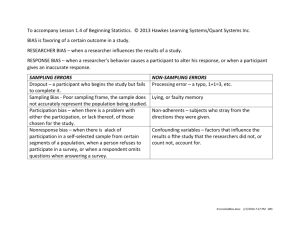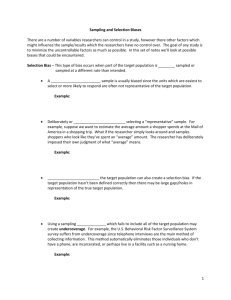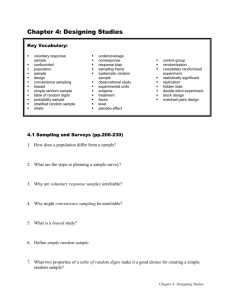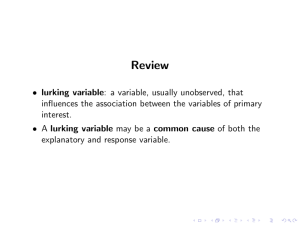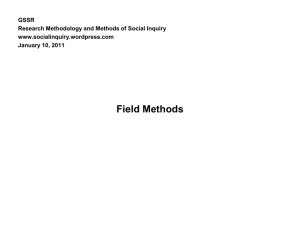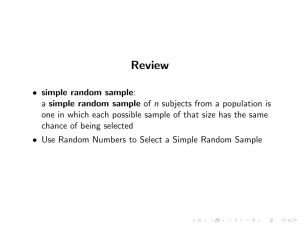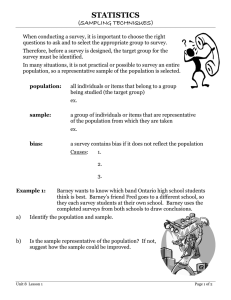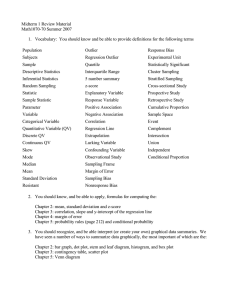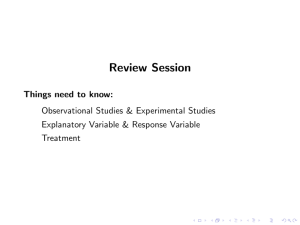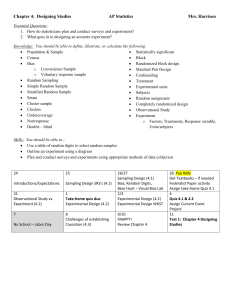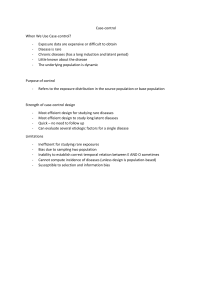IA Objectives
advertisement
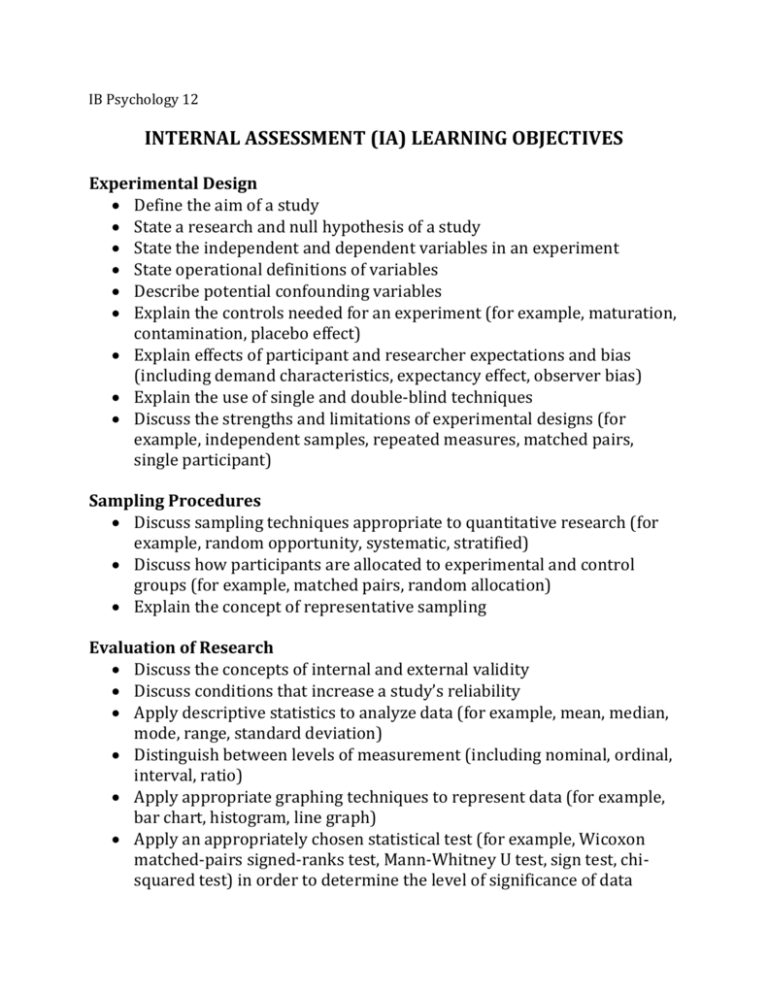
IB Psychology 12 INTERNAL ASSESSMENT (IA) LEARNING OBJECTIVES Experimental Design Define the aim of a study State a research and null hypothesis of a study State the independent and dependent variables in an experiment State operational definitions of variables Describe potential confounding variables Explain the controls needed for an experiment (for example, maturation, contamination, placebo effect) Explain effects of participant and researcher expectations and bias (including demand characteristics, expectancy effect, observer bias) Explain the use of single and double-blind techniques Discuss the strengths and limitations of experimental designs (for example, independent samples, repeated measures, matched pairs, single participant) Sampling Procedures Discuss sampling techniques appropriate to quantitative research (for example, random opportunity, systematic, stratified) Discuss how participants are allocated to experimental and control groups (for example, matched pairs, random allocation) Explain the concept of representative sampling Evaluation of Research Discuss the concepts of internal and external validity Discuss conditions that increase a study’s reliability Apply descriptive statistics to analyze data (for example, mean, median, mode, range, standard deviation) Distinguish between levels of measurement (including nominal, ordinal, interval, ratio) Apply appropriate graphing techniques to represent data (for example, bar chart, histogram, line graph) Apply an appropriately chosen statistical test (for example, Wicoxon matched-pairs signed-ranks test, Mann-Whitney U test, sign test, chisquared test) in order to determine the level of significance of data
